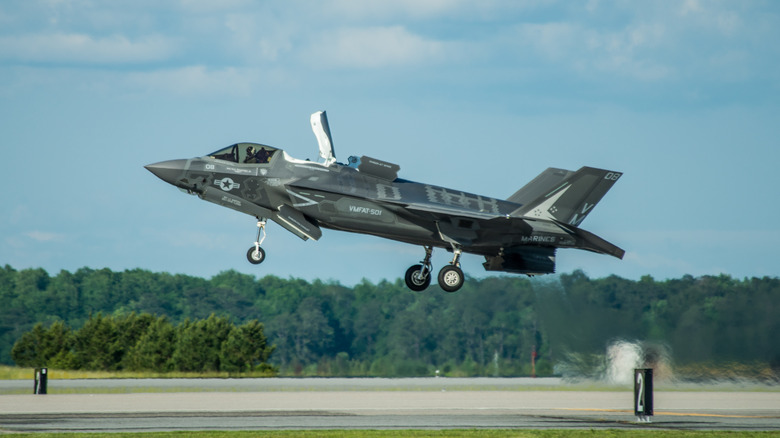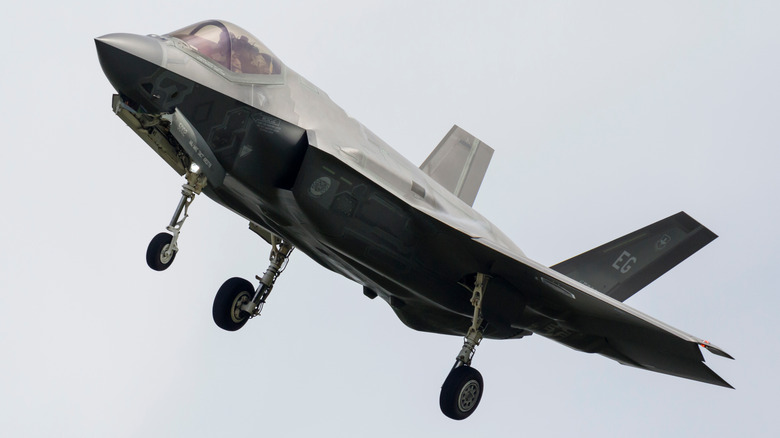The US Military Lost A $130m F-35 Lightning, And Wants You To Find It
Last night, an F-35B Lightning II multirole fighter jet was reported missing in South Carolina. Reportedly, the pilot reported issues with the aircraft and ejected. Fortunately, the pilot did not sustain any serious injuries. There's just the issue of an entire combat aircraft that remains missing. According to a Facebook post by Joint Base Charleston, a military base in South Carolina, military officials are asking the public if they have any information about where the jet could possibly be. You'd think it would be fairly difficult to lose an F-35, especially considering the fact the plane costs somewhere in the neighborhood of $130 million. It's not like they lost a set of car keys.
To make matters more difficult for military searchers, CNBC reports that military officials confirmed that the pilot engaged the F-35's autopilot system before ejecting. That means it's possible the plane flew unattended for some time. That means not only could the search radius be much wider, but there was briefly a time when an extremely advanced piece of military hardware was just flying around by itself over a potentially populated area of the United States. As of Monday morning, searchers still have no clue where the plane could be but are reportedly looking near Lake Moultrie and Lake Marion in South Carolina.
The Marine Corps' hovering fighter jet
The Lockheed Martin F-35 Lightning II, the second aircraft to bear the "Lightning" moniker after the World War II-era Lockheed P-38 Lightning, is a fifth-generation fighter aircraft that's described by its maker as "the most lethal fighter jet in the world." Not only that, Lockheed Martin says "The F-35 strengthens national security, enhances global partnerships, and powers economic growth." While an F-22 Raptor, also made by Lockheed Martin, is mostly a fighter jet and "air dominance" fighter, the F-35 was designed with several roles in mind and has been exported to many allied countries.
The F-35B variant, the same type as the aforementioned missing plane, is designed with STOVL (Short Takeoff and Vertical Landing) capabilities for the United States Marine Corps. That means it is specially suited to take off from very short runways and also land vertically, or hover in place as needed. It accomplishes this by swiveling its jet nozzle downward. That downward thrust measures out to around 40,000 pounds of thrust. The Marine Corps uses this capability to land on ships at sea without the need for a conventional aircraft carrier.
Lockheed Martin also reports that the plane can reach 1.6 times the speed of sound and can carry enough fuel to travel more than 1,000 miles on a full tank. It has not been reported whether or not the pilot who ejected in South Carolina had engaged the hover abilities of their plane. It is also unknown how much fuel was onboard.

